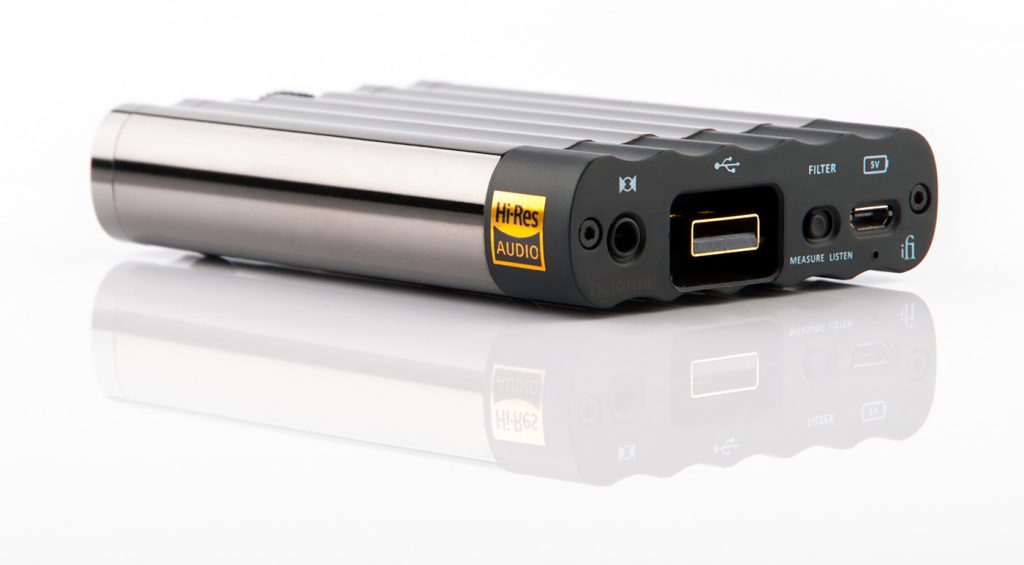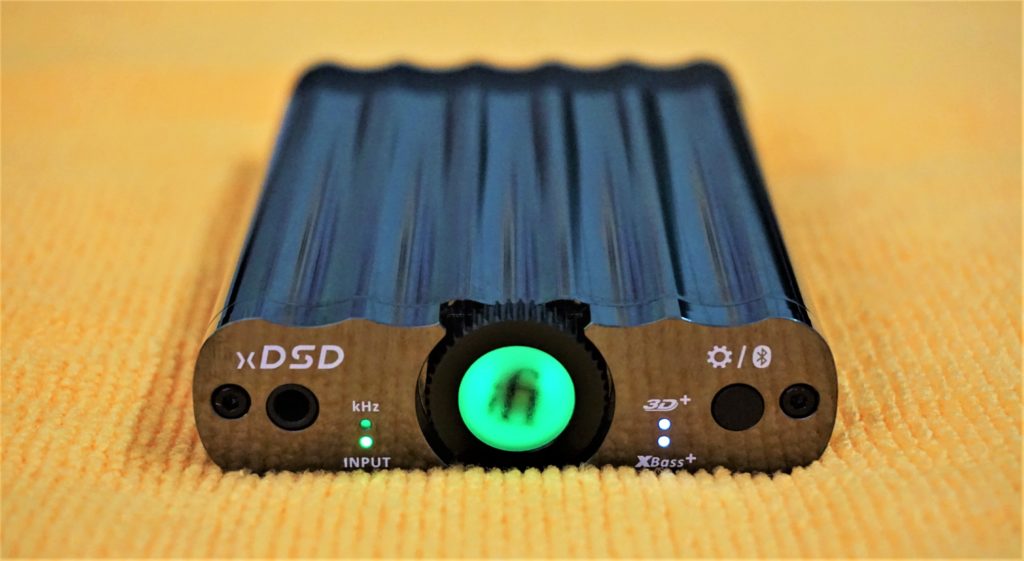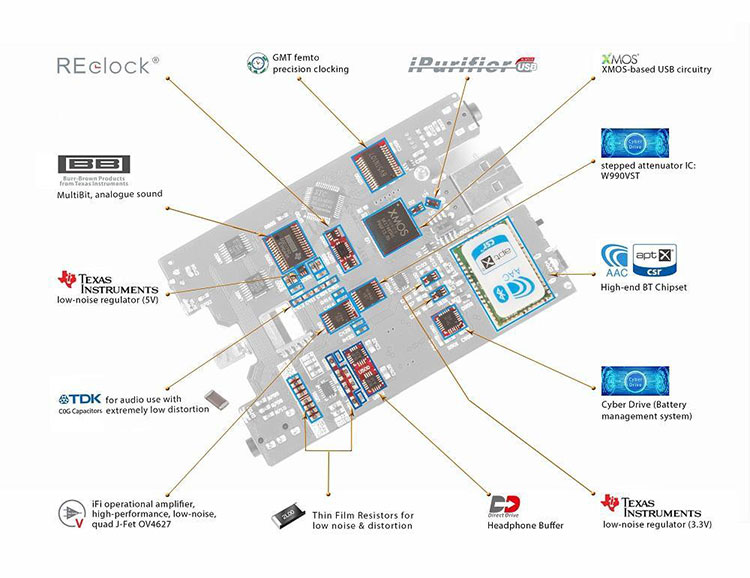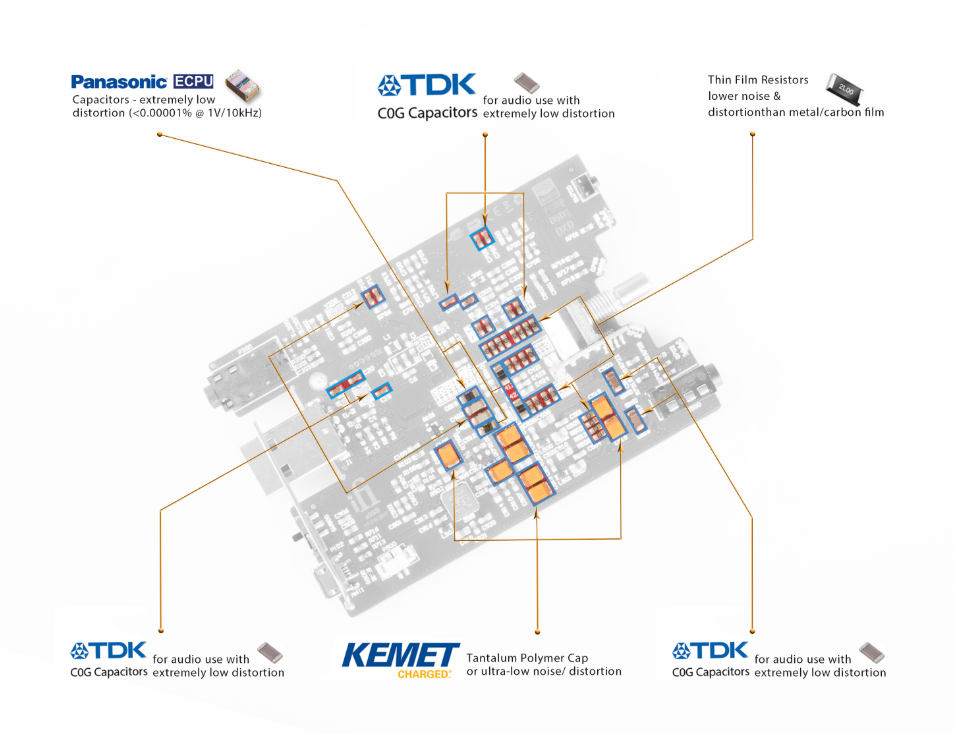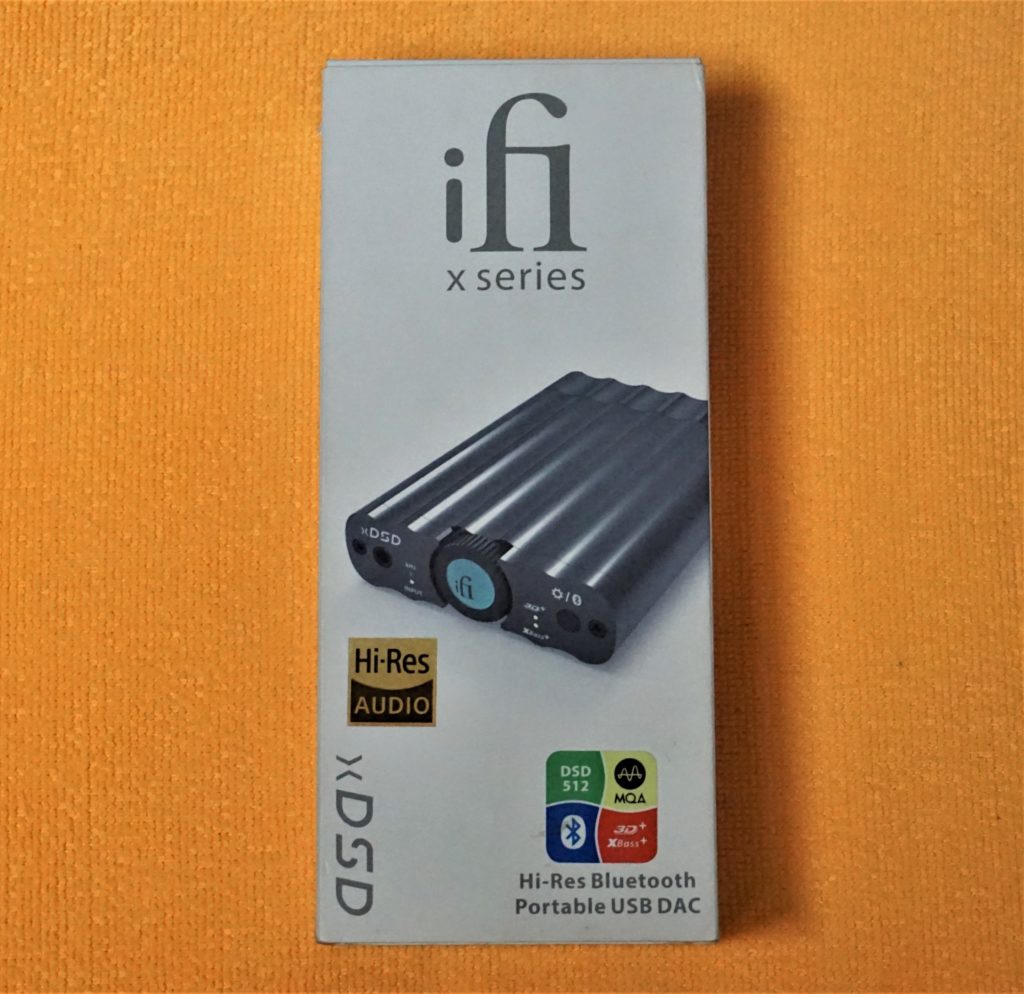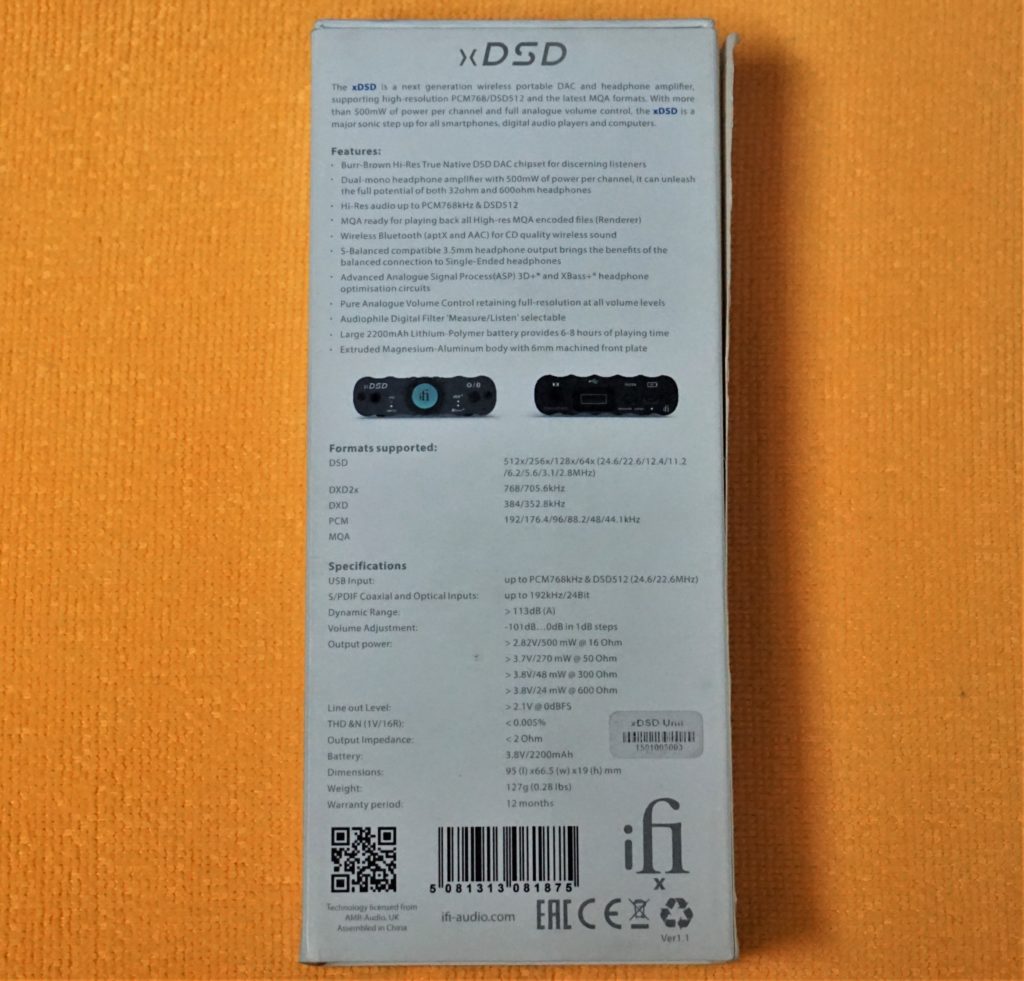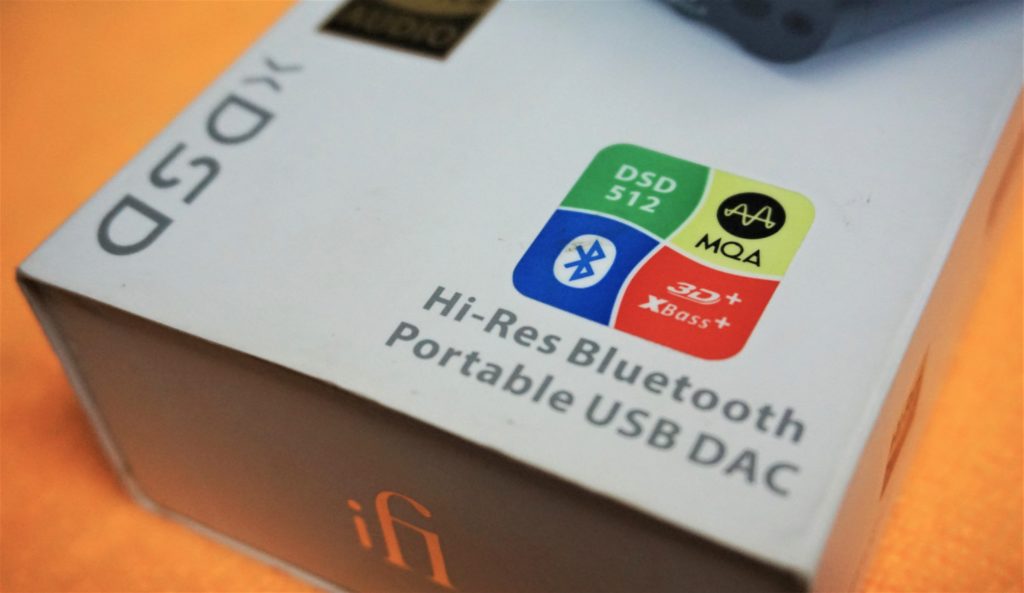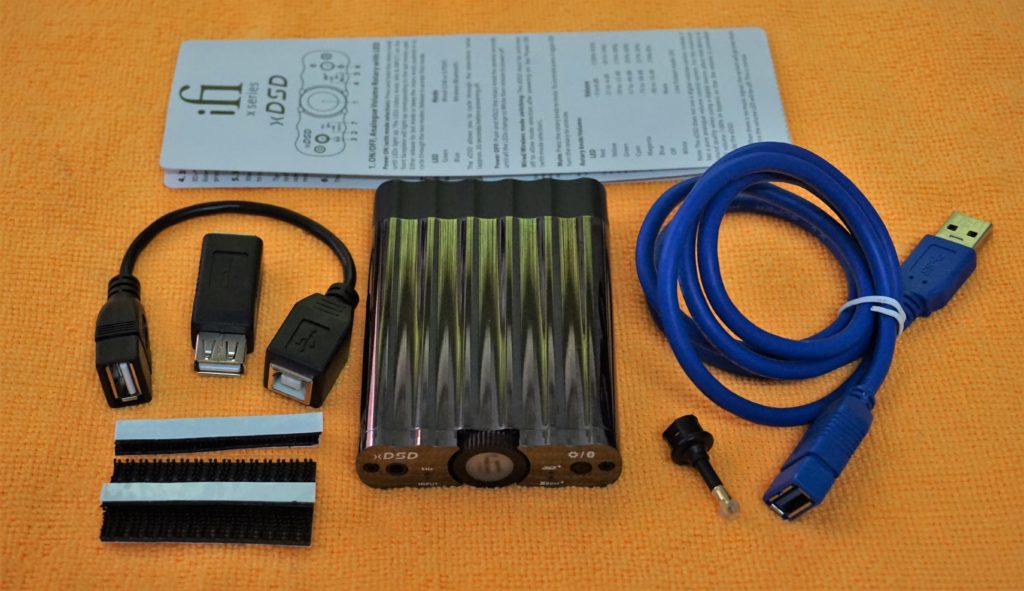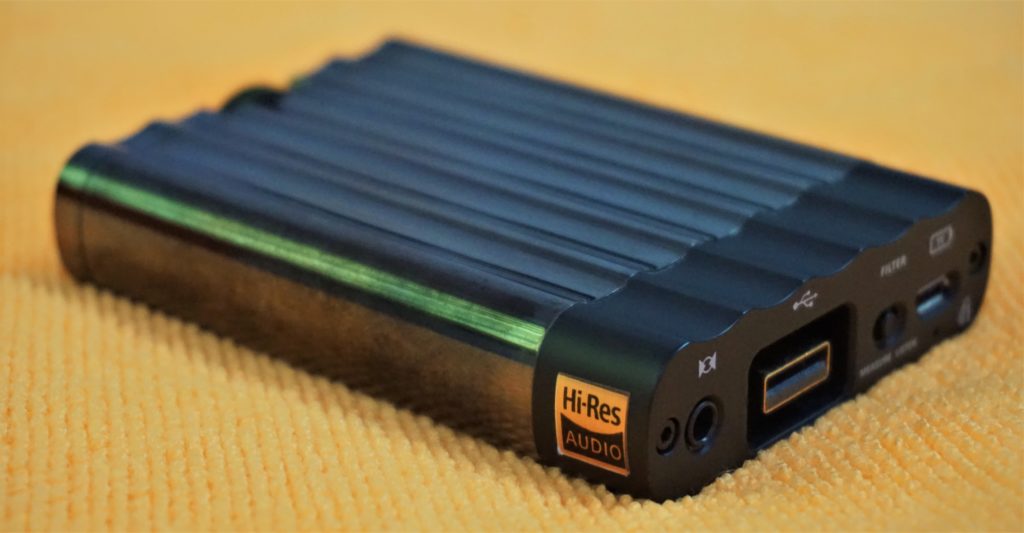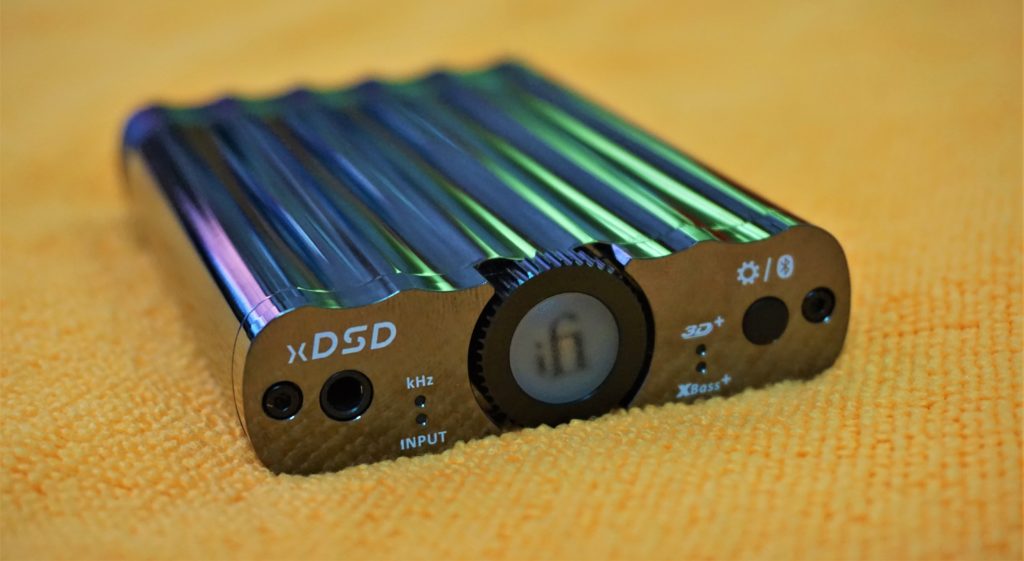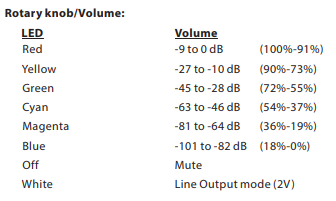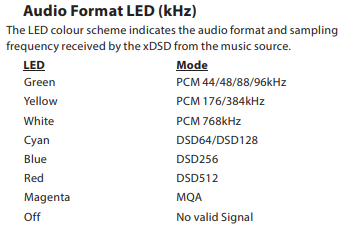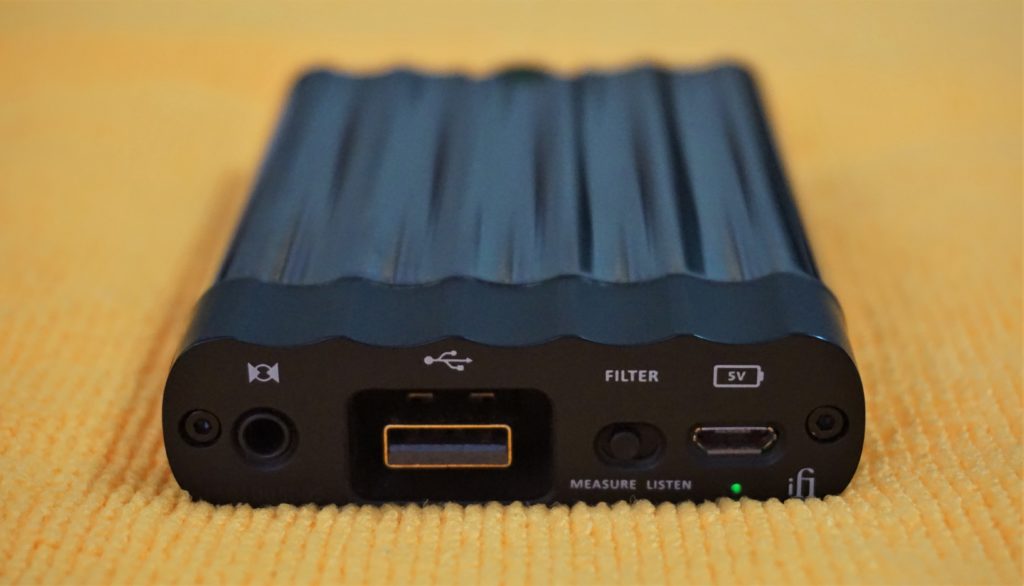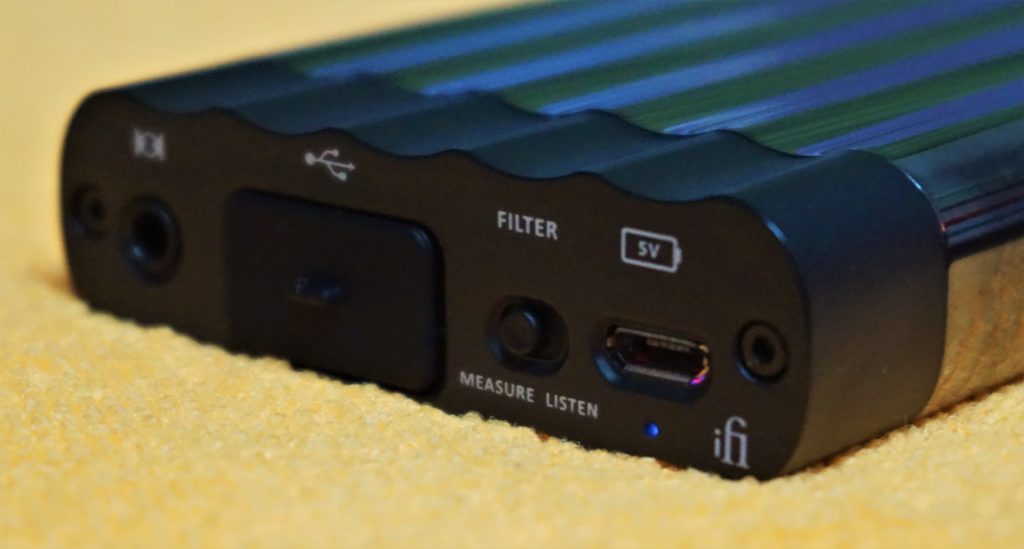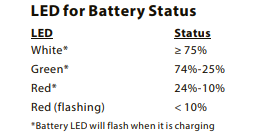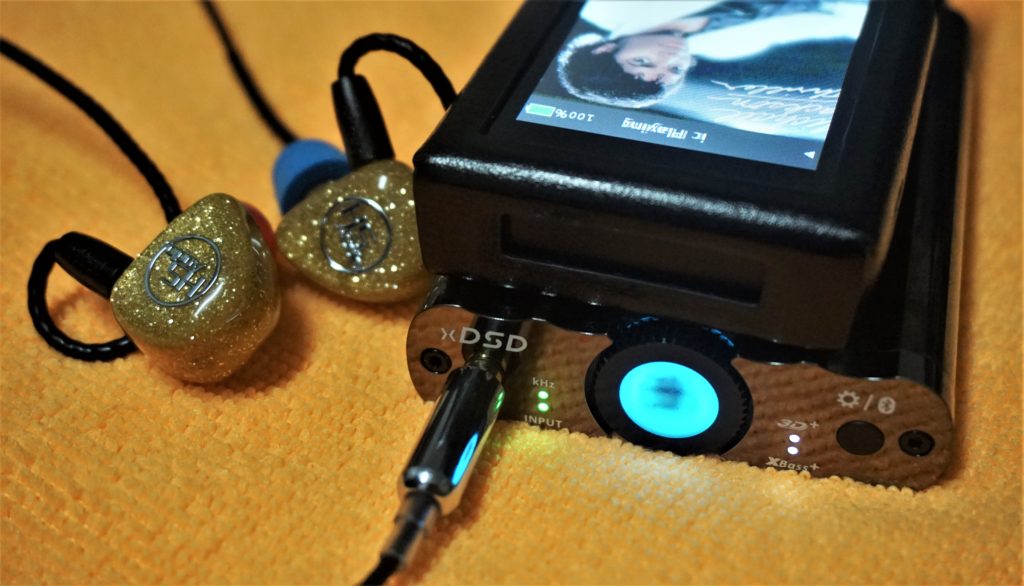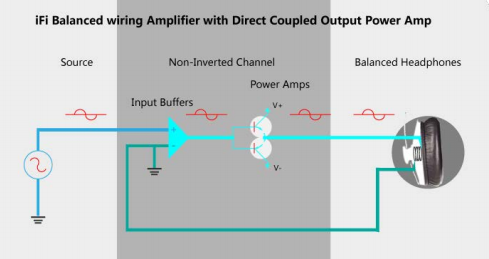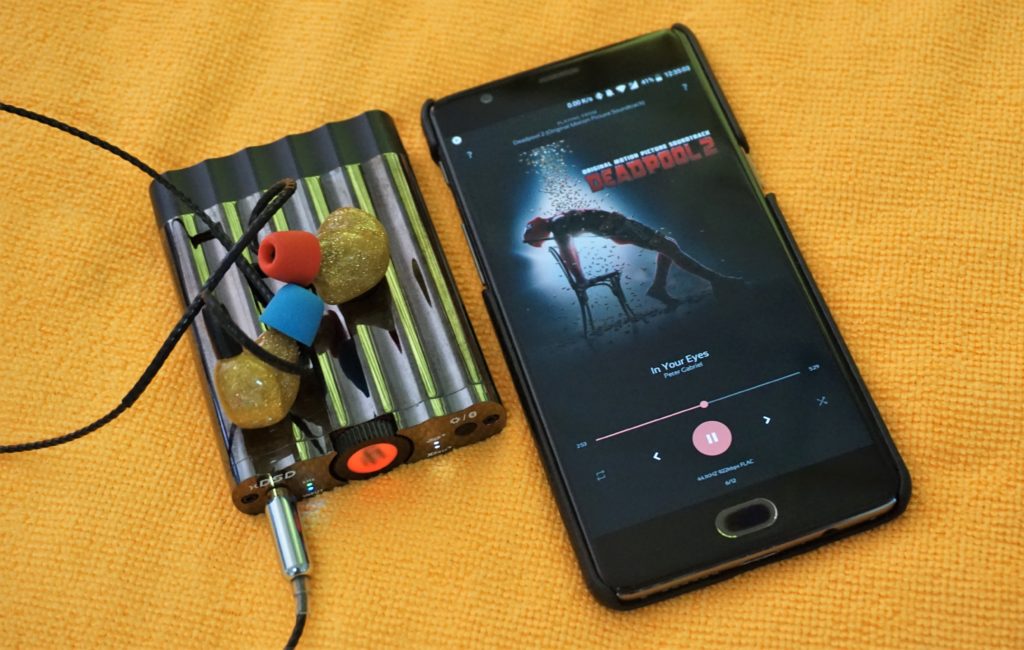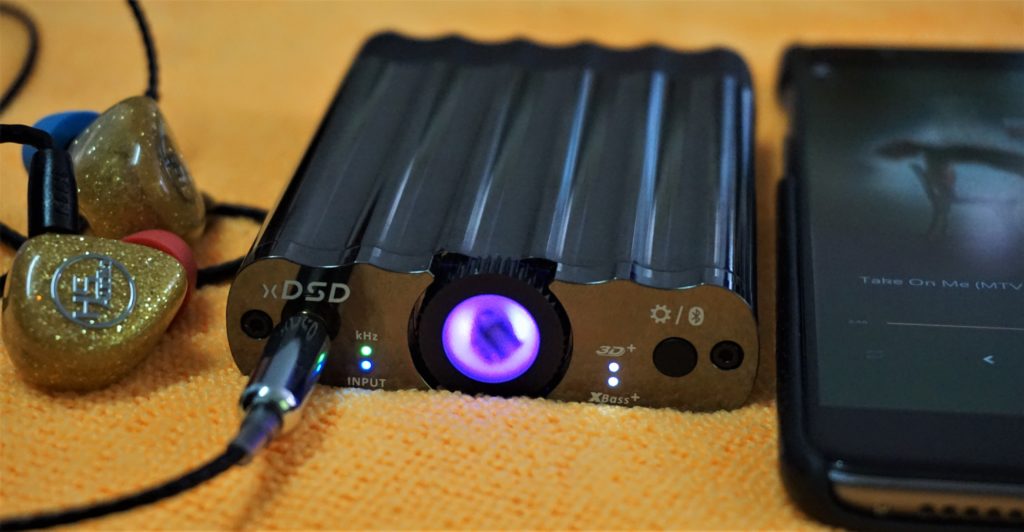General Information
The xDSD DAC is the latest iFi statement in advanced, affordable, portable audio. Its dark titanium vacuum ion plated metal enclosure is pleasingly tactile and compact. The radio-frequency transparent end cap allows full CD-wireless music transmission.
It delivers for music lovers and audiophiles alike.
First, it delivers CD-quality Bluetooth connectivity for Apple/Android to stream the latest music on iTunes, Apple Music, Spotify, Tidal and any other streaming platforms.
Second, it delivers the very highest quality PCM768/DSD512 and MQA formats for downloaded and Tidal streamed music in full studio-quality.
Third, with the iFi analogue signal processing circuitry and the original S-Balanced amplification stage, it delivers pure musical enjoyment to in-ear-monitors or headphones.
The xDSD, a new level of musical experience for your headphones, on-the-go.

High-End Wireless On-the-Go, Ultimate wired performance
Deliver CD-Quality music wirelessly to your headphones from smartphone (Apple iPhone or Android), DAP (Apple iPOD and similar), laptop or smart TV.
AAC and aptX enabled Bluetooth raises sound quality to CD levels compared to the below MP3 levels SBC codec (voice-quality only) found in basic Bluetooth products.
Imagine the xDSD in your pocket driving your headphones while you are surfing on your phone and enjoying Ed Sheeran in the highest quality!
Wired, the USB type A OTG/CCK connector offers the ultimate High-Res audio performance for smartphones, laptops and USB enabled DAPs with 22.57MHz* DSD and 768kHz/32Bit* PCM.
The 3.5mm coaxial/TOSLINK combo S/PDIF input gives older DAPs and disk players a new lease of life as a transport to serve the xDSD with 192kHz/24Bit* full High-Resolution Audio.
* up to these format levels
MultiBit means Musicality
Headphone listening is often tiring and causes listener fatigue.
Not with the xDSD. Time flies by and the listener is immersed in the music. The ‘pluck’ of a guitar can be discerned. A Steinway piano sounds ‘woody’ instead of ‘glassy’ like an electronic keyboard.
To deliver a truly musical performance every technical aspect must be present and correct. From the Burr-Brown multibit DSD1793 DAC Chipset to deliver a realistic, musical sound to the femto precision GMT Clock and intelligent memory buffer system derived from AMR Audio’s USD5,500 flagship DAC products to eliminate jitter. The xDSD is packed with the technology it takes.
Perfected for MQA or non-MQA
Tidal with MQA is defining the future of High-Resolution streaming audio. Ready for MQA out of the box, the xDSD also supports beyond full High-Res Audio with 11.289MHz DSD and 384kHz/32Bit PCM. Simply connect to Tidal (on computer) and check the options to stream MQA ‘like the artist intended’ as the MQA team say.
We also offer an alternative firmware that is optimised for ultra-high resolution audio and which unlocks 22.57MHz DSD and 768kHz/32Bit PCM#. This can be easily downloaded from our website and applied to the xDSD.
# With this firmware MQA is not supported
S-Balanced. Just plug-in and enjoy.
Most premium headphones now include an option for balanced wiring. Balanced wiring is better because it eliminates distortion and crosstalk introduced by the classic unbalanced 3-contact connection that shares the ground return wire and jack connection between channels.
The iFi exclusive S-Balanced technology delivers the maximum performance from single-ended and balanced headphones alike. Compared to standard balanced circuitry, noise and distortion are lowered by up to 3-fold (9dB). Even with non-balanced headphones crosstalk and related distortion are reduced by 50%.
Compatibility for both balanced/unbalanced headphones is straightforward and super user-friendly. Just plug-in and enjoy the music – with live recordings, the xDSD brings out the spaciousness of the concert hall or the intimacy of the jazz club.
Studio sound with 3D+ Matrix and XBass+
You should hear music as if you are in the studio during the final cut. The 3D+ Matrix and XBass+ system help deliver the true musical performance as heard in the studio to your headphones.
Most recordings are made for speakers (not headphones). This produces what is technically known as ‘in-head localisation’, as if the music plays inside your head. Which is unnatural and frankly obnoxious. The analogue-signal based 3D+ circuit restores the correct sense of placement that the artist is in the room and outside your head.
Many otherwise excellent and expensive open back headphones lack low bass. XBass+ restores deep, clean and tight bass and puts the ‘meat’ back into the music, without muddying up the midrange – now EDM or Drum & Bass as they should do, really plumb the depths of the bass notes.
Hear your music as the artists intended.
Pure Line Out mode for ultra-fi
Whether at home or in the car, the Line Out mode means the volume control, 3D+ Matrix and X-Bass+ are bypassed and the output stage is configured specifically for the best line operation, avoiding ‘double-amping’.
The xDSD delivers the musical goods when used with expensive ultra-fidelity home or car audio systems. The more expensive the system, the better the xDSD is able to demonstrate its sonic attributes.
Cyberdrive amplifier design for lowest noise
Got difficult to drive over-ear headphones? No sweat. The xDSD can drive them to eardrum splitting levels (although not recommended!). Have super sensitive in-ear-monitors that show up noise from all sources? With the xDSD silence reigns supreme.
The Cyberdrive headphone amplifier stage is one of the pivotal new circuit designs in the x-series. This new design places all parameters of the fully analogue system under digital control for a ‘best of both worlds’ scenario. The Cyberdrive design incorporates the iFi exclusive OV4627 ultra low noise FET input Op-Amp and W990VST digitally controlled stepped attenuator to deliver a new level of sound-quality.
From lowest noise for IEMs to extreme drive levels: no need to switch anything! Just set the volume control as desired and let Cyberdrive do the rest.
New Cyberdrive System
Nothing is worse than running out of juice in the middle of your favourite tune. The xDSD uses a separate power input (micro USB) for unlimited compatibility with smartphones and no extra power draw from the smartphone’s battery reducing your phone’s up-time. And it packs a battery to keep your music playing.
The new 3.8V/2,200mAh Lithium Polymer battery offers 12% greater actual capacity in the same size package. Depending on the headphones and the connection used, playback times of up to 10 hours for S/PDIF, 8 hours for Bluetooth and 6 hours for USB are achieved.







